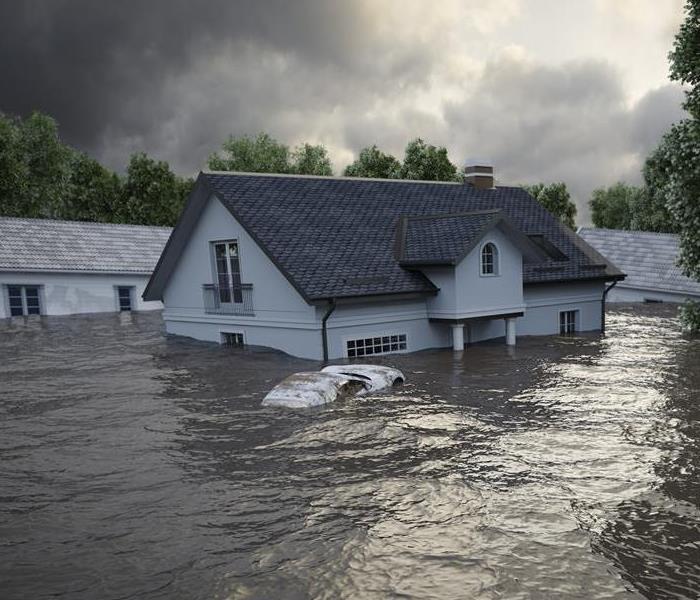How To Prepare for Flood Damage
1/25/2022 (Permalink)
Damages from flooding exceed $40 billion worldwide every year. You can reduce the chance of suffering extensive flood damage by taking steps to prepare your property.
Tips for Preparing Your Property for Flood Damage
There are several steps you can take throughout the year and when flooding is imminent to help reduce your chance of damage.
1. Purchase Flood Insurance
Most homeowners insurance excludes coverage for damage caused by floods. Because even areas that are not in high-risk zones for floods can experience flash floods, it may be wise to purchase a separate flood policy. However, do not wait until storm damage is imminent to try to buy insurance. There is usually a 30-day waiting period from the time you buy your policy until it goes into effect.
2. Understand Your Flood Risk
Search for your address in Salt Lake City, UT in the Flood Map Service Center to get an idea of how likely you are to experience a flood. It may also be helpful to speak with neighbors who have lived in the area for a long time about how often their property has had flood issues.
3. Complete a Household Inventory
Capture videos and photos of all of your valuable property and store them in a safe place. This will help you if you need to file an insurance claim.
4. Store Important Documents Off-Site
While a water remediation company may be able to save some valuable documents, water damage can easily destroy these fragile items. Store important documents, such as birth certificates, medical records, passports and insurance documents in a watertight safety deposit box.
5. Anchor and Elevate Utilities
Protect important utility equipment, such as propane tanks, electrical panels, wiring, sockets, heating systems and appliances by elevating and anchoring them. You may need to hire a professional contractor to assist you.
6. Make Your Basement Water Resistant
Install a sump pump and water alarm in your basement. Install a backup pump that is battery-operated to protect you when the power goes out.
7. Clean Your Gutters
Debris, such as leaves, sticks and bird nests, in your gutters and downspouts can cause water to pool around your foundation, instead of drain away from your house. Clean out your gutters regularly and before any expected weather event. Consider installing guards on your gutters to keep debris out.
8. Elevate or Relocate Furniture
If you know a flood is imminent, move furniture and other valuable items to the attic or the highest floor in your home. If your home is on a single level, you can elevate your furniture by placing cinder blocks or similar materials under the legs.
9. Monitor Weather Reports and Make a Plan
If a flood becomes bad enough, you may need to evacuate your home. Make a plan for how you will get your family members and pets to a safe place. Use a weather radio to monitor weather reports and sign up for emergency alerts.
There is no way to eliminate your flooding risk. However, these steps can help protect your property, your finances and your loved ones.





 24/7 Emergency Service
24/7 Emergency Service
